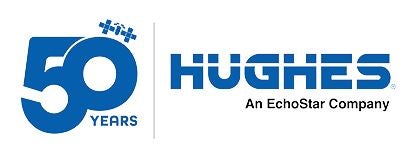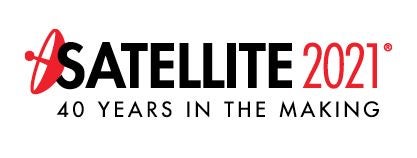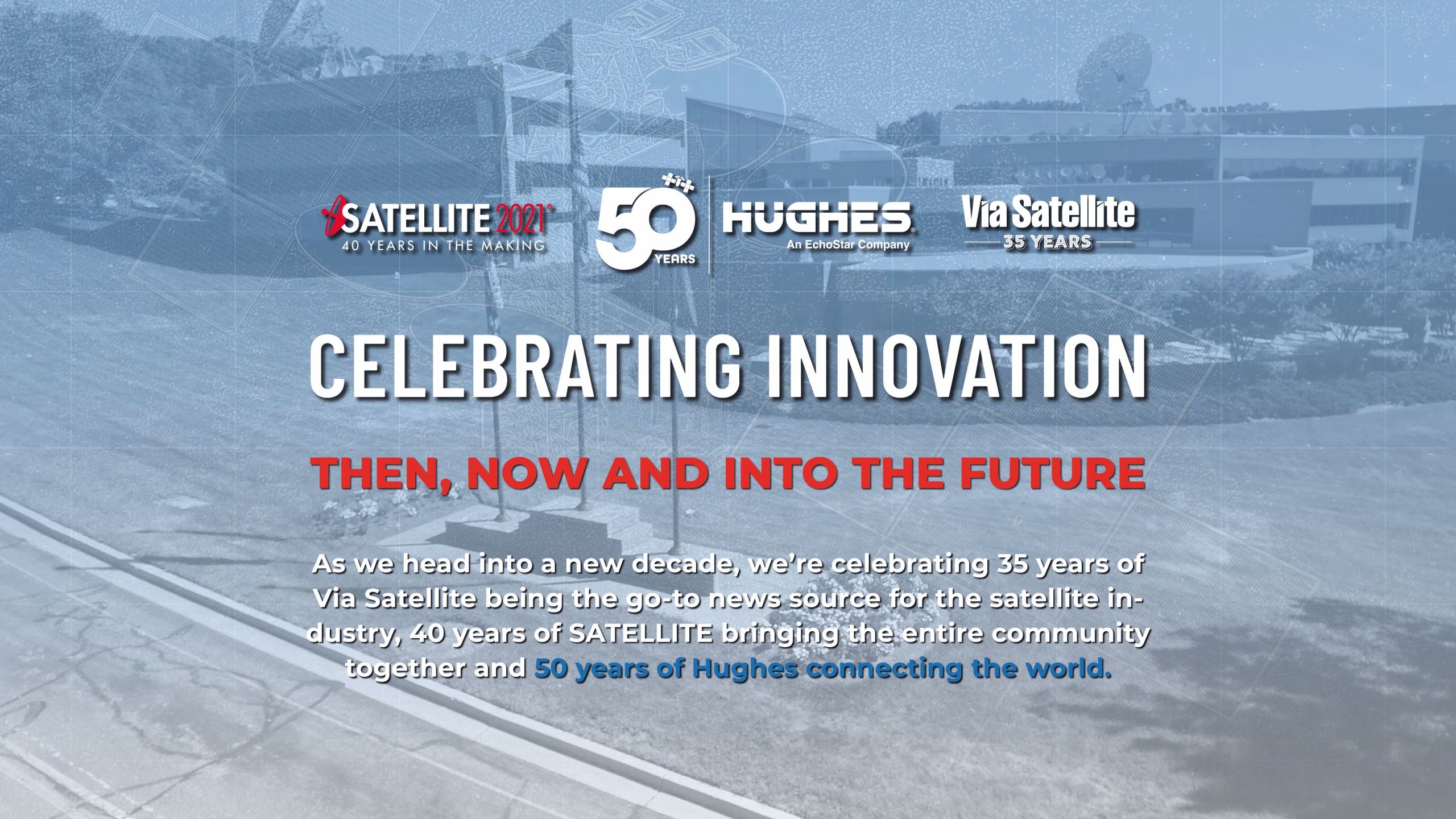
Welcome from Pradman Kaul
In 1968, I graduated with a Master of Science (EE) degree from Cal Berkeley. I had written my thesis on Computer Networking and had a great job offer from a large computer company. I was about to accept the offer when, by sheer happenstance, I met my future boss on my way to play a cricket match at the Ellipse in downtown Washington, D.C. on a Saturday afternoon. His passion, excitement and vision of this new field of satellite communications—a field I knew nothing about—was so powerful that, when he offered me a job at COMSAT Labs, I accepted the same afternoon. All that and a cricket match on the same day.
With that, I became a satellite communications fanatic and have remained so ever since. There is no industry like it: combining all the excitement of space and rocket launches with the most intricate technical problem-solving to provide innovative connectivity solutions for voice, data and video.
The best part is that I have been fortunate to be part of the team at Hughes that has made a real difference in this world, changing the lives of millions of people for the better.
That’s as good as it gets for an engineer.
This year marks a half-century since a few industry luminaries gathered in a garage in suburban Maryland—passionate about harnessing technology to connect people and enterprises. And so was born a company called Digital Communications (DCC) which later evolved to Hughes Network Systems.
So much has changed since that time.
But what has remained unchanged is our passion and our drive to innovate the most advanced, intelligent networks to meet our customers’ needs. And to explore new ways to make those networks more useful, more cost-effective, and altogether more powerful.
To my Hughes colleagues, customers and industry partners, past, present and future, thank you for joining me on this incredible journey. Here’s to the next fifty years!
Pradman Kaul
President & CEO
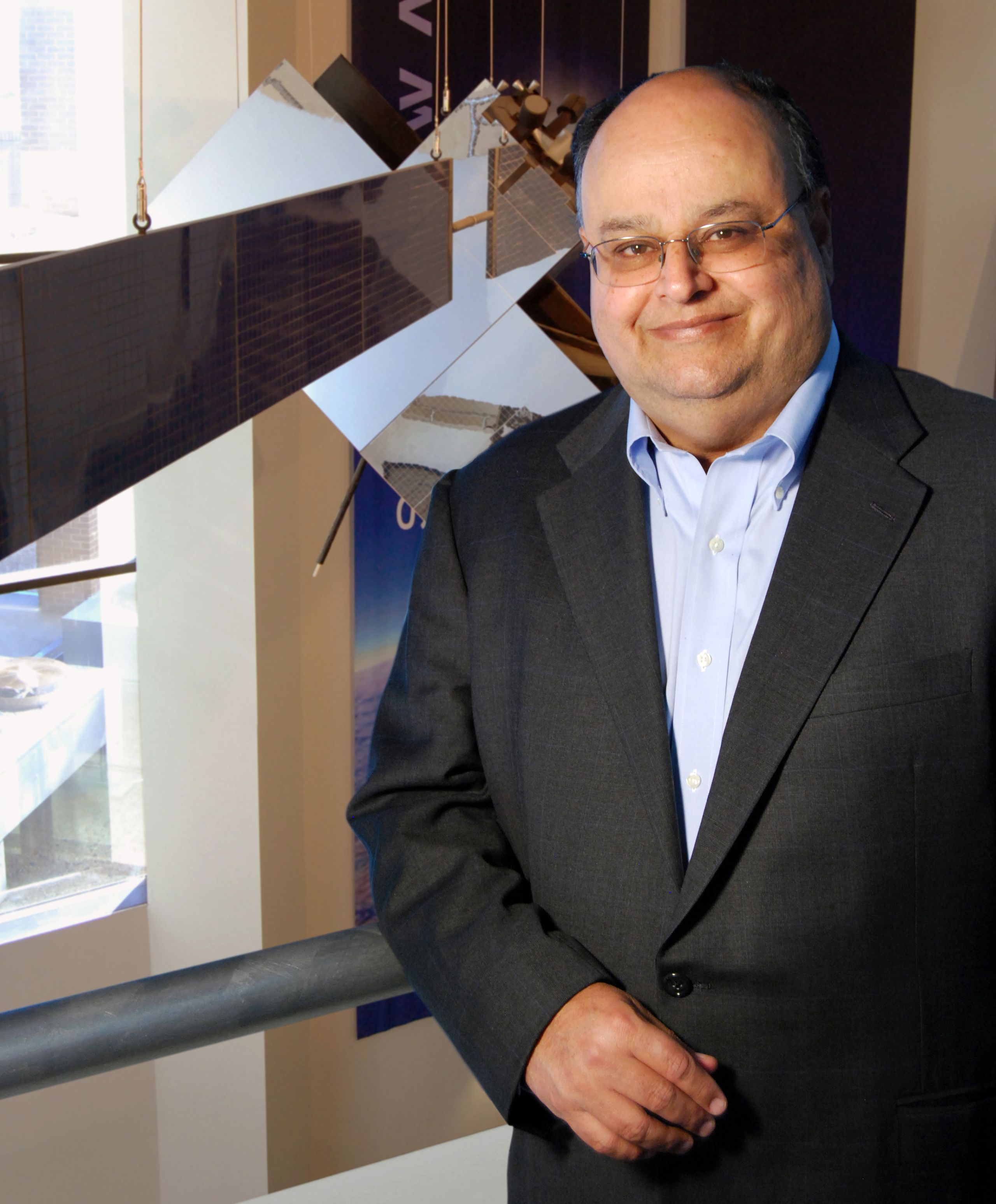
Pradman Kaul | President & CEO, Hughes Network Systems, LLC
Pradman Kaul | President & CEO, Hughes Network Systems, LLC

1971 - DCC Startup Garage Office
1971 - DCC Startup Garage Office

1980 - Construction on HNS Building
1980 - Construction on HNS Building
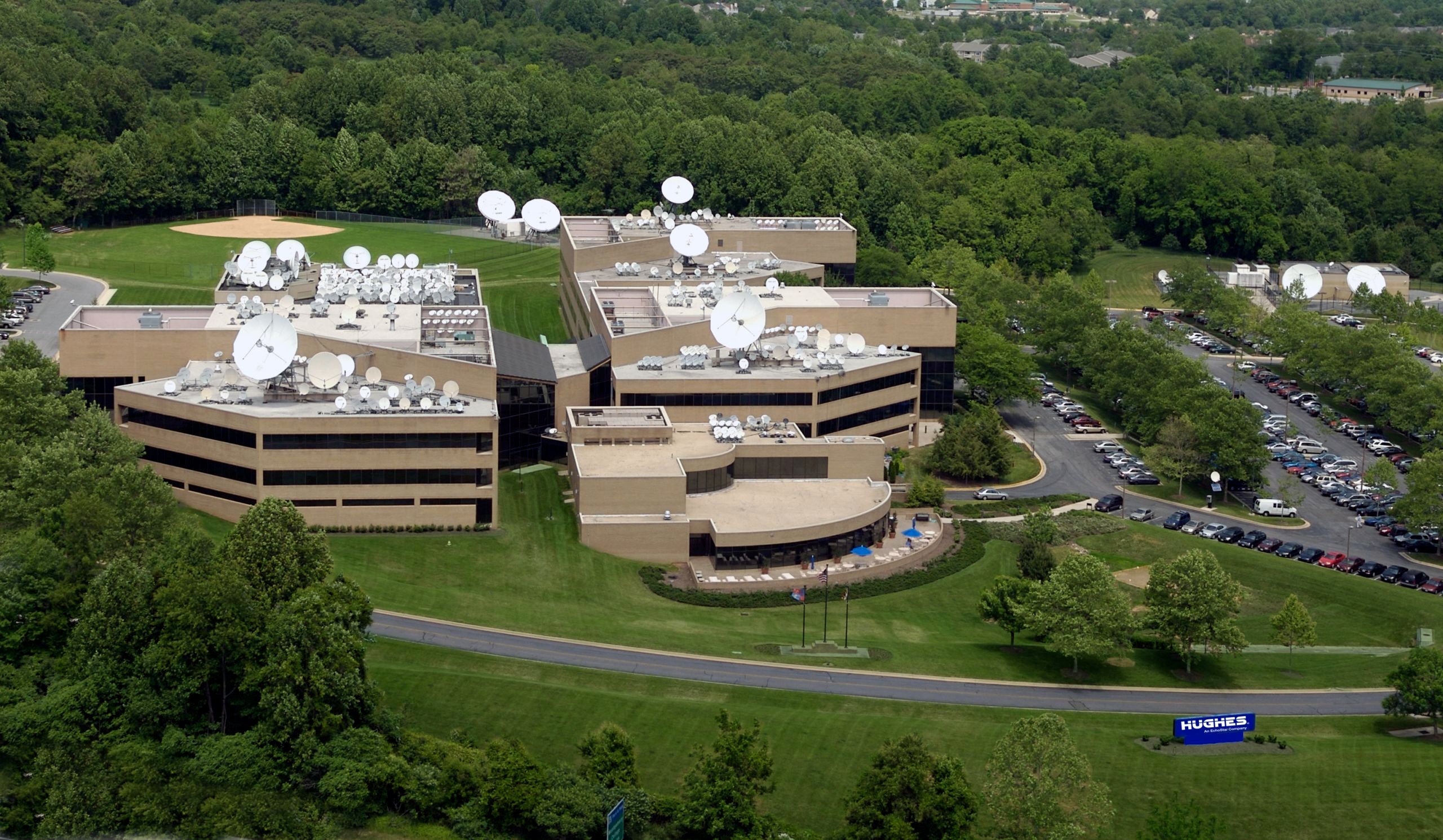
2021 - Hughes Campus
2021 - Hughes Campus

Keep scrolling to read the moments that have shaped our industry and set us on the path of innovation. To read the articles on how the satellite landscape will progress over the next 50 years, click on the boxes below.


1973 — SPADE: The First SCPC/DAMA System in the World
In 1971, a group of employees of COMSAT founded startup Digital Communications Corporation (DCC), which would later become Hughes Network Systems. The COMSAT employees wanted to invest in and commercialize the digital satellite communications technology they were working on.
The technology the founders wanted to build would allow smaller users in the global system, like developing countries, to utilize satellite communications. This system used a Single Voice Channel per Carrier (SCPC) multiple access technology. It was called SPADE — which stands for Single Voice Channel per Carrier-Pulse Code Modulation-Access-Demand Assigned Multiple Access-Equipment.
In “The Rise and Fall of COMSAT,” David J. Whalen wrote that it was hard to persuade others of the importance of the digital technology to satellite communications. This preceded the formation of DCC, led by Gene Gabbard as president, with notable founders John Puente (chairman), Andy Werth, Lou Peeler and Len Golding, along with three other investors for a total of $40k in funding. The only other outside funding for DCC was a $1 million investment in 1973 by Nippon Electronic Company (NEC), Japan.
When DCC first began, the founders were working out of a garage at 112 Frederick Avenue in Rockville, Maryland. Gabbard said DCC was able to obtain a royalty-free license to manufacture SCPC, TDMA, and SPADE. The first major contract for the new company was from ITT Space Communications for SPADE. He recounted traveling to an Earth station in Buitrago, Spain, north of Madrid, to install the system and said the trip was a delight. It was a milestone for the young company of commercializing digital satellite technology, and these new digital features were introduced on the Intelsat system in the 1970s.

1975 – A Signature Deal Arrives
The histories of two of the biggest companies in satellite – Telesat and Hughes — are interlinked thanks to a remarkable deal in the early 1970s. Telesat was formed in 1969, two years before the first incarnation of Hughes as Digital Communications Corporation (DCC). Telesat had ambitious plans to bring the benefits of satellite technology to Canada. Its first satellites – Anik 1 and Anik 2 – were launched in 1973. Then in 1975, it launched Anik 3, and Telesat wanted to start using the revolutionary Time Division Multiple Access (TDMA) technology to deliver better and more efficient services to customers throughout Canada. Telesat began using TDMA in commercial service between Toronto and Halifax for the first time in 1976, and was able to provide 400 high-quality voice circuits between two locations for the first time. It was a huge breakthrough in the satellite sector. And this is where Hughes came in.
For a young Pradman Kaul, employee No. 10 at DCC, it was also a defining moment in his early career. When DCC had been approached by Telesat to get involved in an RFP to build a TDMA system, DCC co-founder and CEO Gene Gabbard tasked Kaul to put together a bid for the project. Everyone at DCC thought the bid had little chance of success. Kaul, an engineer by trade, had never costed anything like this before, and put together a one-page proposal worth $1 million. Much to everyone’s surprise at DCC, Telesat got in touch a few weeks later for DCC to come to Ottawa to negotiate a contract. This would be one of the key early moments for DCC. This $1 million dollar project was a huge deal for DCC at the time, as well as a catalyst for TDMA to become a global standard in satellite communications.
Looking back on this breakthrough deal, Kaul said that Telesat got “an incredible deal.” It seems especially pertinent when you consider DCC’s major competitor at the time for this contract – Raytheon — bid $2.5 million to $3 million for the exact same project. While DCC being a young company could clearly do it for less, it made a profit on the deal. But for “young kids with big dreams,” recalled Kaul, it was a landmark deal. DCC came of age in its first five years of existence, and for Telesat, the deal would pave the way to deliver services more effectively than ever before to households in Canada. This system was finally retired from operation after 20 years in service.
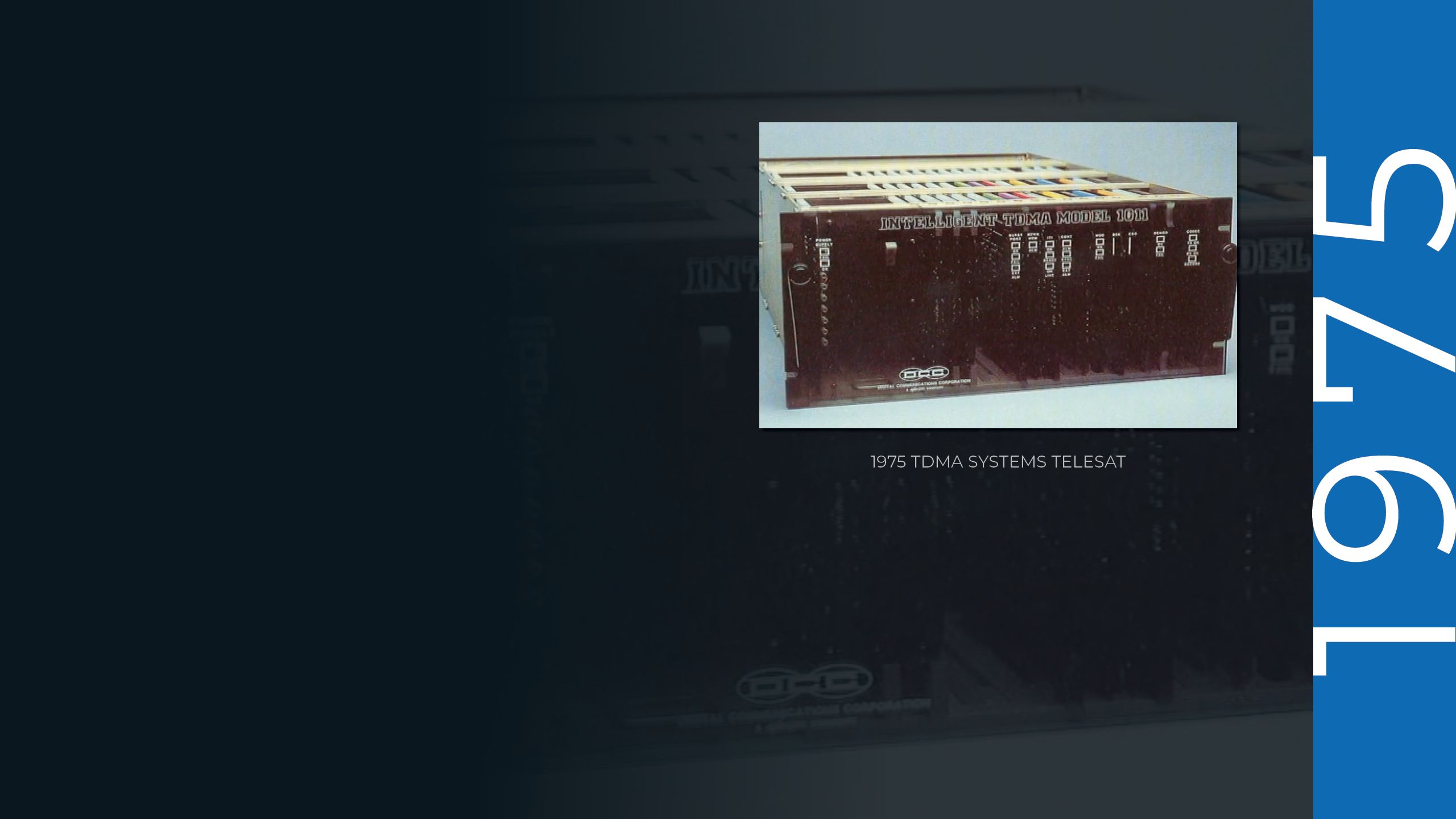
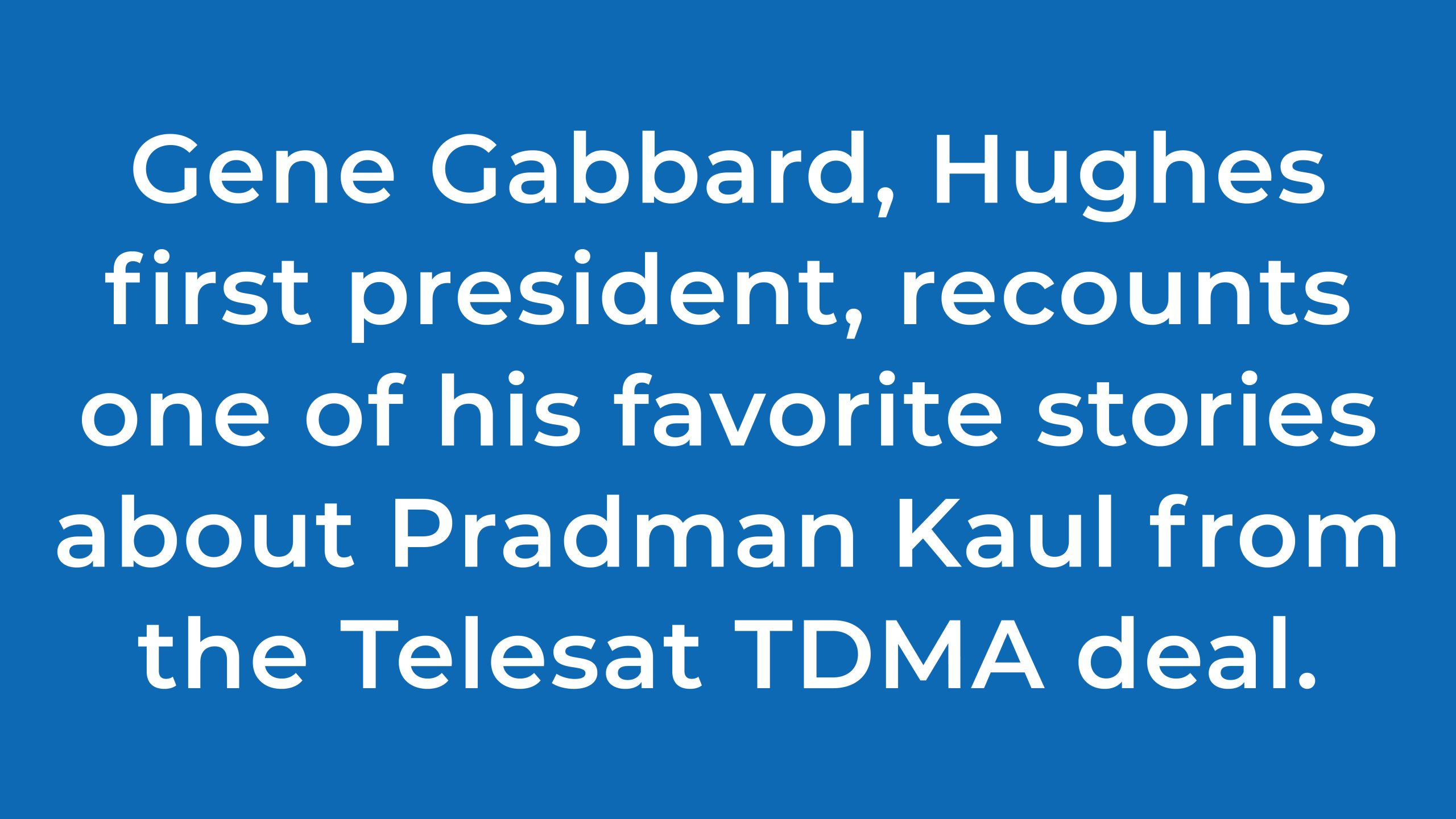
1976 – Marisat: The World’s First Maritime Satellite System
Satellite communication is widely considered to be the most impactful technological development in maritime history since the invention of Morse Code. The World Wars of the early 20th century pushed physicists and engineers to explore new and more efficient ways for sea vessels to communicate with each other. By the time the Soviet Union launched Sputnik in 1957, the U.S. Navy was already experimenting with bouncing radio signals off of the moon and artificial satellites.
But, the first true maritime satellite communication system wouldn’t come to be for another 16 years – and it would come from the commercial sector. In 1973, COMSAT contracted with a manufacturer to begin building what would become the world’s first maritime telecommunications satellites – Marisat F1, F2, and F3 – and with DCC for the below-deck equipment and the shore stations.
The three satellites would have identical payloads designed to provide voice, telex, facsimile and high speed data services in L-band and communications to fixed shore stations in C-band. Each satellite was also equipped with an ultrahigh frequency (UHF) payload, providing one 500 kHz wide-band channel and two 25 kHz narrow-band channels for the U.S. Navy.
The Marisat system was a breakthrough in satellite capability and design. It would involve Hughes filing the first patent on a TDM/TDMA access methodology. This would become a universal standard for mobile phone networks and other telecom systems.
DCC co-founder and president Gene Gabbard recalled the Marisat system’s maiden voyage on the famed Queen Elizabeth 2. On the crossing, a passenger fell ill with a heart attack, and the crew used the Marisat system to transmit EKGs and medical instruction by fax in what was a very early example of “telehealth.”
Interestingly, Marisat would be taken over by a non-profit government organization known as the International Maritime Satellite Organization (INMARSAT) in 1981. The non-profit would eventually evolve into a global commercial satellite operator, still known today as Inmarsat.
Around this time, a new data communications carrier asked DCC to develop a state-of-the-art datacom network using an x.25 packet switch. This became the backbone of the Telenet data network and was used also by other carriers and the U.S. government. Other new innovative applications of this digital technology followed, including broadband ethernet modem and a trunking fiber optic system.


1985 — VSAT Comes of Age
Sam Walton is a business legend in the United States. Born in 1918 in Kingfisher, Oklahoma, Walton would come to national prominence in 1962, when he opened the first Walmart at the age of 44 in Rogers, Arkansas. Walmart would become one of the biggest names in U.S. retail. It developed a reputation for innovation and customer service and in 1985, looking for ways to increase business efficiency, the worlds of satellite and retail would collide in a stunning deal.
In a Fortune article from 2005 about 20 moments that made business history, the deal between Hughes and Walmart was talked about alongside other momentous events in U.S. business history. Satellite allowed Walmart to check on inventory nationwide, track sales, and monitor the success or failure of new products. With Walmart a colossal national operation, it simply could not do everything face-to-face.
The $24 million investment was the first time that retail would see the benefits of working with state-of-the-art space and satellite technology. When recalling the deal for a two-way VSAT system, Pradman Kaul said Hughes worked on the system in both San Diego and Maryland. What was particularly interesting was that Walmart decided to buy the system without having a demonstration of it. They were buying an idea, a concept. What is also perhaps not widely known is that Sam Walton himself personally gave the go-ahead for the system.
It would prove to be a shrewd investment for Walmart. According to Fortune, in the two years prior to the completion of the system, Walmart’s sales were $8.4 billion. Ten years later, sales reached $93.6 billion. Using satellite technology enabled Walmart to become hugely efficient, and use data in a way that other retail businesses were not.
For Hughes, it was another incredible validation of groundbreaking technology. Jack Shaw, retired president and CEO, Hughes Electronics (its name at the time) said, “We married our data and satellite technology and came up with something completely new – VSAT technology for the enterprise customer. We needed someone to have confidence in us. We needed someone to raise their hand and put their seal of approval. This would prove to be a defining moment for the company.”
The deal would usher in the VSAT era and make satellite more mainstream than ever. It kickstarted a new era for Hughes. Looking back at the history of retail and Walmart in the U.S., satellite plays a key role in the rise of the retail giant. Not bad for a completely unproven technology at the time.

1996: The Birth of HughesNet
In 1996, Hughes Network Systems applied satellite technology to the internet, launching a development that promised to turbocharge internet service. It was the very first consumer satellite internet service and was coupled with a user’s dial-up modem to enable delivery of large, downloaded files, in addition to supporting the interactive activities of the time. It took download times from an hour to only 90 seconds.
The service was called DirecPC and it was highly valuable to users seeking high-speed service. DirecPC users would dial into their local internet service provider on a standard telephone line. But with DirecPC service, large files and streaming data could be uploaded to the Hughes Galaxy IV satellite in Geostationary Orbit (GEO) and downlinked directly to the user’s own 20-by-30-inch elliptical dish.
This allowed for much higher speeds than typical broadband downloads offered at the time. It was also the first national, high-speed internet service. DirecPC’s link was so fast that Hughes could provide subscribers with real-time audio, video, and multimedia transfers. Instead of waiting for data to crawl through a phone line at 14.4 kbps, users could receive it via satellite at speeds up to 400 kbps.
Continuing on its path to innovate services for the internet, Hughes began offering two-way satellite service in December 2001, primarily targeted to consumers and small businesses.
The venture into home internet was a natural shift for Hughes Network Systems, having already built a substantial consumer set-top box business selling receivers to DirecTV customers. The shift to internet services took the company from being an equipment supplier into being a carrier, as well. In order to make this successful, the company had to adopt a service-oriented culture and also invest in a new set of expertise with billing systems and operational support to transform into a broadband carrier, former Executive VP Pradeep Kaul recalled.
The service, now known as HughesNet, is the largest consumer satellite internet service in the world and provides crucial connectivity to more than 1.5 million subscribers.

2007: Hughes Launches the Revolutionary SPACEWAY-3 Satellite
With the launch of SPACEWAY-3, Hughes entered into a new era of its business as a satellite system operator delivering end-to-end satellite services across the U.S.
One interesting aspect of the birth of SPACEWAY-3 is that it only came about after Hughes lost the bid to build the Teledesic system to Motorola in the late 1990s. After losing this contract, the leadership was tasked by the Board to build its own system and in 30 days came back with the initial concept of the SPACEWAY system. The Board signed off on the $1.8 billion idea. It seems sometimes even when you lose, you ultimately find a way to win.
Operating in a newly assigned Ka-band spectrum, SPACEWAY-3 truly was the first modern-era telecommunications satellite. It would have more than five times the amount of capacity than other satellites in the same generation. It would be able to switch and route broadband traffic on the satellite, and provide single-hop communications between small, .7 meter satellite terminals (VSATs). SPACEWAY-3’s advanced antenna technology used dynamic formation of spot-beams across the continental U.S., which provided Hughes with a much more flexible way to manage capacity and deliver bandwidth services on demand.
SPACEWAY-3 was the third satellite of the SPACEWAY global communications system that was originally envisioned to provide broadband capabilities of up to 512 kbit/s, 2 Mbit/s, and 16 Mbit/s uplink data communication rates. SPACEWAY-1 was a part of DirecTV’s constellation of direct broadcast satellites, and at 6080 kg was the heaviest commercial communications satellite ever put into orbit when it launched in 2005. SPACEWAY-2 was launched that same year. Both supported DirecTV’s direct-to-home broadcast fleet.
At the time SPACEWAY was conceived, it was difficult to find engineers with the ability and experience to bring such a cutting-edge satellite service to life. The final years of the 20th century were the peak of the dot com boom. Software and systems engineers were being scooped up as soon as they graduated from college. Many of those late 90s, early 2000s hires are still with the company today.
Boeing built SPACEWAY-3 at its Satellite Development Center in El Segundo, California. Though based on Boeing’s 702 satellite bus model, SPACEWAY 3 comprised of several unique elements in order to optimize it for data networking. The satellite included a digital processor, a downlink phased array antenna, a microwave switch matrix, 132-foot solar arrays, and flight hardware and software for point-to-point and point-to-multi-point connectivity. Finally, and most importantly, it could form a stunning 24 simultaneous 500 Mbps beams across the continental U.S.
When SPACEWAY-3 entered service in October 2007, it single-handedly doubled the world’s available Ka-band capacity supply. It activated its first customer and began serving HughesNet customers in the United States in April 2008. HughesNet surpassed 500,000 North American subscribers in January of 2010.



2012: Hughes Launches JUPITER-1, Brings HughesNet Gen4 to Market
With broadband internet subscribers growing rapidly in North America and the Internet consumption by subscribers increasing dramatically, Hughes Network Systems saw the need to augment its SPACEWAY-3 satellite with a next generation spacecraft.
Hughes revealed the JUPITER-1 high-throughput satellite in June 2009, and it would be even more powerful than the just recently launched SPACEWAY-3. The new spacecraft would be designed to deliver more than 100 Gbps throughput using an enhanced version of the IPoS broadband satellite standard. The JUPITER system would be designed to work within a very dense and robust gateway architecture, including high-throughput terminals.
Hughes tapped Space Systems/Loral to build JUPITER-1 based on its SSL-1300 platform. It would be designed to employ a multi-spot beam, bent pipe Ka-band architecture during a 15-year-plus service life. JUPITER-1 is a very large satellite weighing in at 6,100 kilograms (13,400 lbs) Its solar arrays generate a minimum of 16.1 kilowatts of power.
JUPITER-1 would be the cornerstone of Hughes’ planned HughesNet Gen4 fourth-generation satellite Internet service. The cleverly named service was brought into being around the time of 4G LTE wireless, with the ability to provide enhanced Internet browsing performance for new social media platforms and support high-bandwidth applications such as video and music. JUPITER 1 exponentially increased the capacity of its predecessor SPACEWAY 3 to 120 Gbps and delivered 100 times more capacity than conventional Ku-band satellites.
When EchoStar acquired Hughes Network Systems in June 2011, JUPITER-1 was dubbed ECHOSTAR XVII. Arianespace launched JUPITER-1 into geostationary orbit in July 2012 on an Ariane 5 ECA rocket launched from Kourou, French Guiana. The satellite used its own propulsion system to maneuver into its final orbital slot at 107.1 degrees West longitude.
Utilizing both SPACEWAY-3 and JUPITER-1 high-capacity satellites and next-generation ground equipment, Hughes was able to follow consumer trends and offer data allowance plans for commercial customers and customized versions of those plans for government customers. Customers could choose download speeds and different levels of government- and enterprise-grade equipment, while receiving full support and service.
JUPITER-1 provides high-speed Internet access to customers in the United States and Canada. After Hurricane Sandy struck the United States East Coast in 2012, Hughes launched a new emergency services package for the 2013 hurricane season. Using Ka-band capacity from both SPACEWAY-3 and JUPITER-1 satellites, Hughes’ new emergency service would provide essential broadband Internet connectivity for government and business when a disaster strikes, with speeds up to 15 Mbps.



2017: The JUPITER 2 Era Begins
One of the remarkable facets of the Hughes story is the company’s ability to reinvent itself to keep it at the forefront of the satellite industry. In 2017, it would take its ambitions a step further when it initiated service from JUPITER-2 (EchoStar XIX), one of the world’s highest capacity broadband satellites ever launched, in a stunning statement of intent.
The satellite, positioned at 97.1 degrees West was built by Space Systems Loral (SSL) and had a huge 200 Gbps of capacity. The satellite enabled download speeds of up to 25 Mbps. JUPITER 2 allowed Hughes and its consumer broadband play to become a nationwide proposition, effectively positioning satellite to reduce the digital divide in the U.S. and other markets. The deal was evidence of Hughes' determination to push the envelope when it came to technology and make sure satellite would play a key role in the development of broadband services across the U.S.
Three years prior to launch, Hughes signed a deal with Xplornet Communications, a large Canadian rural broadband provider, which committed to a lifetime lease of the Canadian satellite capacity on the satellite. It was a key deal for the company and an impressive validation of JUPITER 2.
The satellite has been in orbit just over three years, and has powered the growth of Hughes’ broadband business across the U.S. and into parts of Latin America. The company now has well over 1 million broadband subscribers in the US and around 500,000 outside of the U.S., a pretty significant business. Just under 70 percent of Hughes’ segment revenue comes from consumers, with enterprises bringing more than 30 percent of overall revenues.
JUPITER 2 was a significant step forward and further evidence of the company’s ability to bring best in class satellite technology to the masses.



2020: Hughes Invests in a Multi-Orbit Future with OneWeb
OneWeb was a darling of the New Space industry, a startup with a plan to connect billions of people around the world to the internet through small satellites in Low-Earth Orbit (LEO). The company had 74 satellites in orbit, a high-volume production facility in a joint venture with Airbus, and a ground network partnership with Hughes Network Systems in place. But the company shocked the satellite industry by filing for bankruptcy in March 2020, just as the COVID-19 pandemic was heating up in the United States.
But that was not the end of the story for OneWeb. After exploring other possibilities, a new consortium was formed to take OneWeb out of bankruptcy, led by the United Kingdom government and Bharti Global Limited investing $500 million each. Hughes Network Services joined the consortium with a $50 million investment, and re-signed its contract to develop the gateway electronics and core module. The investment was a natural fit for Hughes, as a previous partner of OneWeb, and with the company’s history of work with the United Kingdom government, and with Bharti in India.
Hughes President & CEO Pradman Kaul said at the time that partnering with the LEO operator will increase Hughes’ addressable market. “Up to now, when we offer a customer a service, the only tool in our quiver of arrows was GEO capability, which doesn’t have 100 percent coverage of the globe. With this hybrid networking concept where we will have both LEOs, hopefully, and GEOs, we increase the size of the market that we can address significantly,” he told Via Satellite in August 2020.
Kaul said using OneWeb’s LEO satellite to complement the Hughes GEO fleet will bring with it polar coverage and low latency, and strengthen its offerings to the government, and mobility services like aeronautical and maritime. In the near future, Hughes internet service from GEO can be supplemented by the global coverage of OneWeb’s LEO satellites.
Hughes’ work with OneWeb continues to exemplify the innovation the company is known for in the evolving satellite sector as the industry works toward a multi-orbit future. The OneWeb team now brings together a government, one of the top global telcos, and a top satellite communications technology company.

2022: Hughes Prepares to Launch the Largest Commercial Satellite Ever
50 years in and Hughes shows no signs of slowing down. Next year is shaping up to be another momentous year for the company. The company intends to launch JUPITER 3 which will once again raise the bar for satellite tech. The satellite itself will have two to three times the capacity of JUPITER 2 with more than 500 Gbps of capacity. The satellite, which is being built by Maxar, will cover the Americas and bring a huge amount of new capacity to these markets.
The satellite aims to serve a wide range of sectors such as consumer, enterprise, aeronautical, cellular backhaul and community Wi-fi markets. The satellite will provide download speeds of up to 100 Mbps, and once again play a role in bringing top broadband services to people outside of urban and metropolitan areas. Interestingly, it will use Q- and V-band for gateway feeder links in order to optimize the amount of Ka-band available for customer, another key new technology innovation.
For Hughes, there is an eager anticipation to get the satellite in orbit. As in every market around the world, demand for broadband in Hughes’ consumer markets in North and South America skyrocketed due to the COVID pandemic which swept the globe and forced an almost global lockdown. JUPITER 3 will be a key and huge event for the company in 2022, and as the world starts to get back on its feet after the COVID19 pandemic, the need for connectivity will be stronger than ever.
If there is one thing the world learned in 2020, it is the importance of connecting society. Satellites like JUPITER 3 will enable the digital divide to be bridged. For a company celebrating 50 years, it is also an impressive way of staying at the cutting edge of an industry that is set to see huge amounts of change throughout the coming decade.
In 1971, five people started out with a dream to build a new company. They started in a garage at 112 Frederick Avenue. Now, half a century later, Hughes has grown into one of the most beloved and respected companies in our industry. In 2022, Hughes will take the next step on one of the most exciting journeys our industry has ever seen.

Continue on the Journey of Innovation in the Satellite Industry

To learn more about Hughes, please visit www.Hughes.com.
